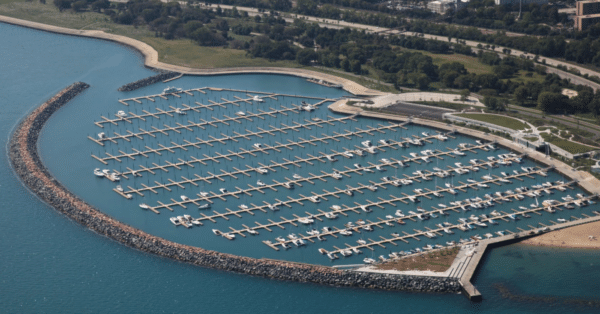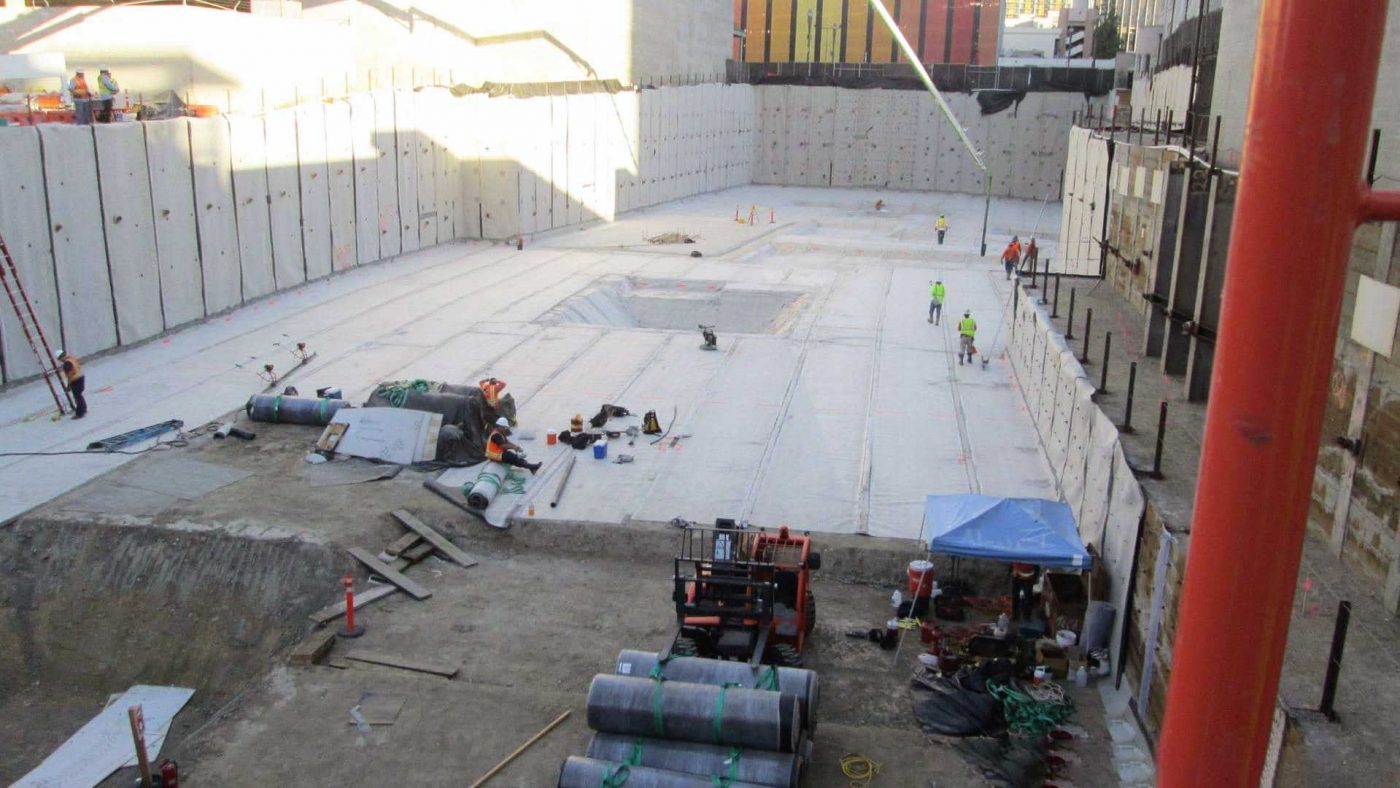Modern commercial and residential buildings often include spaces below ground level. The areas below the grade level are often used for parking, utility rooms, storage for maintenance, and tunnels for services and communication conduits. As part of the building foundation, the performance of this part of the building enclosure is vital for structural integrity and life cycle costs.
What is Below Grade Waterproofing?
Below-grade waterproofing is the construction practice of applying membranes and coatings to the foundation walls of the structure under street or ground level, as part of the building envelope It can go by other names such as below-ground or basement waterproofing.
Effective waterproofing and water management techniques go hand-in-hand to keeping the below grade areas leak-free. An astute project owner would ask: What below grade waterproofing methods and processes should be used to ensure the quality and performance of the finished building(s)?
With a team of waterproofing experts, VERTEX helps provide objective, experience-powered guidance when it comes to waterproofing your building for longevity and lasting safety. Feel free to reach out to us to discuss your needs. Here we will explore below grade building envelope in new construction.
Effective Coordination in Design Phase
Below grade waterproofing should ideally last as long as the building’s structure (remedial waterproofing solutions can be prohibitively expensive). You don’t just want to prevent the water from penetrating into the building foundation – you want to control the water on the property in the first place.
Below grade waterproofing design relies on two sources of information – the land’s soil & underground water conditions and the building’s foundation design. The water management for below grade starts from the work of a geotechnical engineer, who performs soil testing early to find the water table level and if there’s contamination and other factors such as salt deposits. That information gets handed off to the structural engineering firm where they design the foundations to handle the calculated hydrostatic pressure and the load of the building.
With this information on hand, the building envelope consultant is brought in to review the plans and coordinate the details with the project’s geotech, structural, and architect professionals. This includes checking the compatibility of materials, calling out incomplete specifications, and more. When change orders come in during construction, if it pertains to the building enclosure, the consultant will also review them to verify it doesn’t create waterproofing performance issues.
Below Grade Waterproofing in the Construction Phase
During the construction, a successful below grade waterproofing system will include a combination of effective drainage and impervious membranes applied on the foundation.
There’s a variety of perimeter drain systems that can be applied. Which is best for your building depends on factors like:
- the ground slope around the foundation
- the type of soil
- irrigation systems used on landscaping
- the material that the building foundation was made from
- the design of the building
Drain systems can be installed both outside and inside, in which case they are used in combination with biofiltration.
Below Grade Waterproofing Methods
There are two types of below grade waterproofing methods depending on the place of application – positive-side waterproofing and negative-side waterproofing. Positive-side waterproofing is done on the side where hydrostatic pressure is applied. In the case of below-grade waterproofing, the positive side is the outside surface of the foundation, closest to the soil, and the negative side is on the inside.
Positive-side waterproofing includes:
- fluid-applied seamless membranes
- sheet systems
- hybrid systems combining a fluid-applied membrane in conjunction with an integral fabric
- bentonite clay
It’s important to note that dampproofing solutions applied on the positive side are NOT considered waterproofing methods by UBC Code. They are inexpensive treatments based on bitumen or cement and are designed to prevent water from moving through the tiny capillaries in masonry and concrete, sometimes even against gravity. Basically, it helps to keep soil moisture out, but not liquid water.
Positive-side waterproofing is preferred over negative-side methods because it’s more effective. Negative-side waterproofing methods redirect water after it penetrates the foundation. These solutions are best used with positive-side methods because it’s impossible to ensure the structural integrity of the building or structures close to the foundation without a way to keep water out of the foundation wall assembly.
One of the negative-side waterproofing methods is coating the inside of the foundation in acrylics, crystalline, or latex additives, either as part of specialized sealant products or in a cement/sand mixture. Negative-side methods also include remedial crack injections. However, with crack injections, it’s highly likely that the water will find another weak spot to penetrate.
What if below grade waterproofing was not done correctly?
Because the areas below grade are subject to extreme loads (carrying the whole structure), deterioration at those places can greatly reduce the serviceable life of the structure. Some signs that there is water damage to the foundation are:
- paint that blisters or peels
- damp patches
- dribbling water
- mold and mildew
- wood rot
- rust
- odor
- cracks
- efflorescence (white powdery deposits)
The first signs of water damage to the foundation should prompt action. The longer the potential damage is ignored, the more devastating the consequences can be. In extreme cases, a failed system can lead to a flooded building.
How Can VERTEX Help?
VERTEX is an AEC firm that delivers integrated Forensic, Engineering, Construction, Environmental and Digital solutions on complex projects that span the globe. Our firm has building envelope specialists who frequently work on large-scale projects and their combined experience spans lifetimes. If you’d like to tap their expertise for your commercial or multi-family project or property, please contact us.
This article was originally published by Xpera Group which is now part of The Vertex Companies, LLC.







